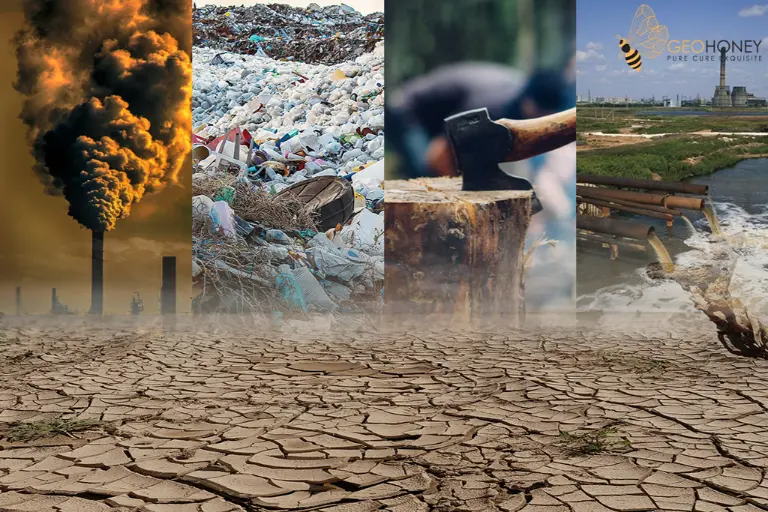- Tokyo: 14:39
- Singapore: 13:39
- Dubai: 09:39
- London: 05:39
- New York: 00:39
Skiers are Spreading PFAS 'Forever Chemicals' across Mountains Worldwide

A recent study conducted by The James Hutton Institute and the University of Graz has unveiled a concerning environmental issue affecting ski mountains around the globe. The study reveals the presence of hazardous PFAS chemicals in the soil of these popular skiing destinations, posing significant implications for both the environment and public health.
PFAS, also known as per- and polyfluoroalkyl substances, are human-made chemicals notorious for their persistence in the environment and the human body. These "forever chemicals" are commonly found in ski wax and have been discovered in alarmingly high concentrations in the soils of family-friendly ski areas. This stark contrast between skiing and non-skiing regions emphasizes the direct impact of skiing activities on environmental contamination.
Viktoria Müller, who led the study as part of her Ph.D. research at the University of Graz, expressed concern over the potential accumulation and spread of these chemicals, which can persist for hundreds of years and may infiltrate groundwater systems.
The presence of PFAS in ski mountains has gained attention following the recent ban on PFAS-containing ski waxes in professional skiing due to their association with serious health issues such as cancer, fertility problems, and liver damage. This study reinforces the urgency of the ban. However, even in non-skiing areas, small detections of PFAS have been found, highlighting the widespread distribution of these chemicals in the environment.
The research team examined approximately 30 PFAS compounds present in ski wax and tested six commercially available waxes purchased prior to the ban. Alarmingly, five of these waxes contained fluorinated compounds, illustrating the extensive use of PFAS in ski products.
Enforcing the ban on PFAS waxes has proven challenging, with international skiing bodies only recently starting to implement it in events due to the time required to develop effective testing methods. A notable case involved a two-time Olympic medalist being disqualified for using skis laden with PFAS during the Alpine World Cup in Austria.
PFAS chemicals, synthesized in the 1940s, can be found in various household items, including non-stick cookware and waterproof clothing. Their ability to travel through the atmosphere has resulted in global contamination, with recent studies even detecting PFAS in unexpected places such as bottled water.
Given the health risks associated with PFAS, there have been calls for broader bans and ongoing research into safer alternatives. As these efforts continue, both the skiing community and the general public face the challenge of addressing the environmental impact of these persistent chemicals.
In summary, the study conducted by The James Hutton Institute and the University of Graz sheds light on a critical environmental issue affecting popular ski destinations. It emphasizes the need for effective regulation and the development of eco-friendly alternatives to protect both human health and the environment from the widespread distribution of PFAS chemicals.
For more information on PFAS and ski mountains, it is important to understand that per- and polyfluoroalkyl substances (PFAS) have emerged as a significant environmental concern. These synthetic chemicals, widely used for their water and stain-resistant properties, pose a formidable challenge due to their persistence in the environment and potential health risks.
PFAS, which consists of over 12,000 human-made chemicals developed in the 1940s, find applications in various everyday products, including non-stick cookware, waterproof clothing, and firefighting foams. Their unique molecular structure, resistant to heat, water, and oil, has made them popular in numerous industries.
Protecting ski mountains from PFAS contamination is crucial due to the chemicals' persistence. Once PFAS enter these ecosystems, they remain for an extended period, accumulating in soil, water, and living organisms. Health studies have linked PFAS exposure to serious issues such as increased cancer risk, immune system disorders, and developmental problems in children. The accumulation of PFAS in the human body over time raises growing concerns about their potential health impacts.
Governments and environmental agencies worldwide have started to address the PFAS problem, regulating their use and researching safer alternatives. Bans on specific PFAS compounds, especially in consumer products and industrial applications, have been implemented in some countries. Furthermore, public awareness of PFAS risks has grown, leading to increased demand for PFAS-free products and encouraging companies to reformulate their products and seek safer alternatives.
Addressing the PFAS challenge requires a multi-faceted approach, including effective cleanup methods for contaminated sites, research into biodegradable alternatives, and stricter regulations on PFAS use and disposal. As our understanding of PFAS and their impact deepens, proactive measures are crucial to safeguard the environment and public health from these persistent chemicals.
In conclusion, PFAS chemicals pose a complex environmental issue, not only on ski mountains but also in regions worldwide, demanding immediate attention. By taking collective action across government, industry, and the public, we can mitigate the risks associated with these "forever chemicals" and work towards a safer and healthier environment.
Source: earth.com




We know that wherever we are, there are chemicals around us, especially air pollution, etc.